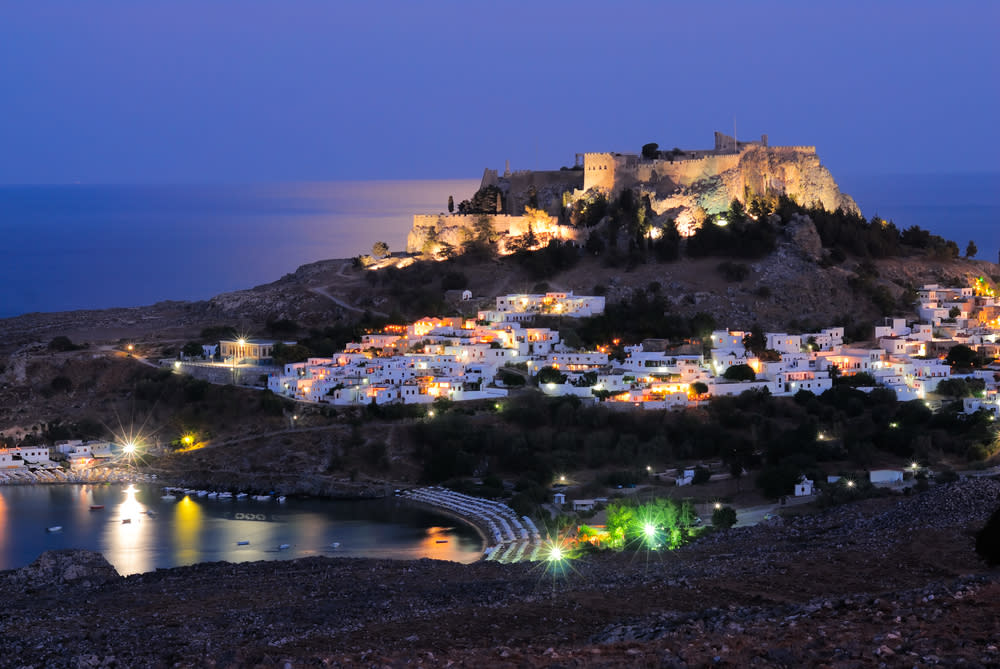More from Lindos
Main Menu
- 00:00
- 06:00
- 12:00
- 18:00
- 23:00
Lindos : Next 24-Hour Weather
Today - 9th May 2025
Sunrise 06:06
Sunset 20:02
Tomorrow - 10th May 2025
Sunrise 06:06
Sunset 20:02
Holiday Weather Now
Sorted by popularity:
Updated at 02:00 GMT
-
Temp feels like19°C67°F
-
Length of day13h 54m
-
Pressure29" (1011 hpa)
-
Visibility10 km (6miles)
-
Wind speed14 km/h
Sunrise 06:07
Sunset 20:01
-
Temp feels like:
19ºC (67 ºF)
-
Length of day:
13h 54m
-
Pressure:
29" (1011 hpa)
-
Visibility:
6 miles (10 km)
-
Wind speed:
14 km/h
Lindos, the main tourist town on Rhodes Island, enjoys a transitional climate typical of Greece's Dodecanese Islands. Sitting on the same latitude as Turkey in the Aegean Sea, Rhodes experiences temperate to dry tropical conditions. It receives long, hot, dry summers and short, mild winters. Situated on the south coast of the island, Lindos can expect to be marginally hotter than the north of the island.
At the beginning of Rhodesâ long summer season, temperatures rise rapidly from 17°C in March to 24°C in May. April is considered the first summer month seeing average day time temperatures around a pleasant 20°C. The sea, however, can remain cool and unpredictable through April and May. From June to September rain is almost non-existent and perfect sunbathing weather prevails. Temperatures are regularly in the 30s and the sun parades itself across the clear blue sky for around twelve hours a day, laughing at the idea of clouds. Meltemi, the strong, northwest wind that dominates the summer seas, sends pleasant breezes across Rhodes but being in the south, Lindos does not always benefit and the 31°C average can become uncomfortable. Away from the beach amongst the peak season crowds the heat is often stifling and tourists are at risk of dehydration. Rhodes Islandâs resorts are becoming increasingly popular during spring and autumn months. Sun is still guaranteed during these periods which are often considered preferable to the relentless heat of the peak season. Temperatures remain in the 20s till mid-November though the chance of rain increases from October. Visitors should bring extra layers for the cool November evenings which see average lows of 13°C.
Winter in Lindos is mild and wet. The sun still comes out but the sea becomes cold and choppy. Visitors at this time of year may find it difficult to get about as ferries only run when the sea is relatively calm. Even then crossings are usually more tumultuous than in the summer and those prone to seasickness are likely to feel quite queasy. January and December are the coldest and wettest months with average highs of 15°C and average lows of 9°C. Rain is quite likely throughout the winter months though the sun still comes out for around four hours each day.
Rhodes is the sunniest of all the Greek islands, reportedly receiving three-hundred days of sunshine a year. The island hopping in the Dodecanese Islands is a favourite of sailors and chartered yachts due to their beauty and the favourable winds that whisk their boats along. The Metemi wind recedes in the spring and autumn months, giving way to a southeast wind. The Greek Islands are the tips of mountains that once stood on the Aegean Plain. This accounts for their rugged terrain; Lindos sits on an extremely steep hillside overlooking a harbour.


















